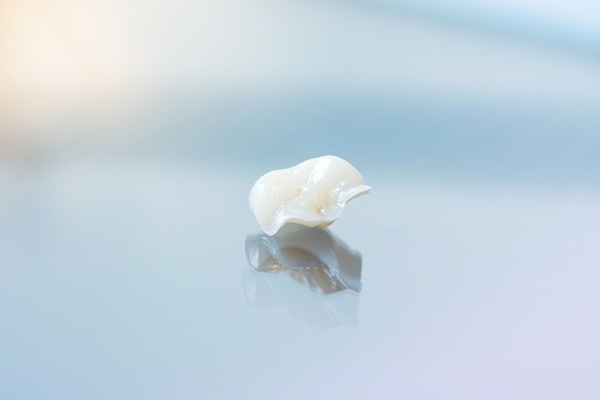How Is a Dental Inlay Used by Your Dentist?

A dentist may recommend a dental inlay to repair dental cavities or other forms of damage that affect the interior portion of the tooth (the grooves of teeth). Inlays are more commonly placed on molars and premolars rather than on teeth that are toward the front of the mouth and more visible.
The role of a dental inlay in dentistry
Many are less familiar with a dental inlay than a dental crown. There are a few similarities between the two, but there are also notable differences. The following review discusses what a dental inlay is, how it compares with alternative restorations, and when a dentist may recommend a dental inlay.
What is a dental inlay?
It is a type of dental restoration used to repair decay or damage in the grooves (chewing surfaces) of teeth. It is similar to a dental crown, but it only covers the inner part of the tooth, whereas a crown covers the entire tooth on all sides. A dental inlay is typically made of ceramic or metal material.
When might a dentist recommend a dental inlay?
Dental inlays are commonly used by dentists to treat dental cavities. It is often seen as an alternative to a dental filling and can be just as effective for treating minor to moderate-sized cavities caused by dental decay. A dental inlay can also treat other forms of teeth damage, such as chips or cracks to the grooves of teeth.
A dental inlay vs. alternative dental restorations
A dental inlay covers the grooves of teeth. It is different from a crown, which covers both the grooves and the cusps of teeth. A dental onlay covers the cusps of teeth but not the inner portion of the tooth. A dental inlay is different from a dental filling because an inlay is a single piece of material, whereas a filling using an amalgam is a material that is coated over the cavity. Dental inlays can also repair more than dental cavities, whereas a filling is almost exclusively used for cavities.
How to care for a dental inlay after placement
A dental inlay can last for more than a decade in many cases when the tooth is properly cared for by brushing regularly and using floss and mouthwash as recommended by the patient’s dentist. Regular check-up visits are also encouraged. Many patients who choose a dental inlay get used to it and do not notice that they have the restoration a few days after the inlay is placed by the dentist.
Get in touch with us today to schedule a dental visit
Our team is available by phone or message and is glad to answer your questions about dental restorations such as a dental inlay during a consultation visit. We treat a range of concerns and offer dental inlay treatment, and we take pride in helping our patients through the treatment process.
Request an appointment here: https://hemetdentalcenter.com or call Hemet Dental Center: Brian Stiewel DDS, INC. at (951) 707-4366 for an appointment in our Hemet office.
Check out what others are saying about our dental services on Yelp: Dental Inlay in Hemet, CA.
Recent Posts
There are two types of tooth extractions: simple and surgical. Simple extractions are for teeth that are entirely exposed and can be accessed above the gumline. Surgical extractions require an incision into the gumline or connective tissue. The type a patient needs depends on the cause and state of the tooth. Here are six reasons…
A dental inlay is one of several restorative options available to repair damaged teeth and preserve oral health. When decay, fractures, or wear compromise the strength or structure of a tooth, dentists consider the severity and location of the damage to determine the most appropriate treatment. Understanding the differences between a dental inlay, onlay, filling,…
Whether you recently had a tooth extraction or are preparing for the procedure, there are a few guidelines to follow after oral surgery. Properly caring for your health can help you recover as healthily as possible and reduce the risks of complications. Here are some tips to help you have a comfortable and speedy recovery.In…
Dental bridges can replace missing teeth effectively and often without needing surgery. Not only will this restore the smile, but it also helps patients avoid the negative oral health effects of missing teeth. A general dentist can determine whether a patient is a good candidate for bridges in a consultation. However, learning the basics can…


